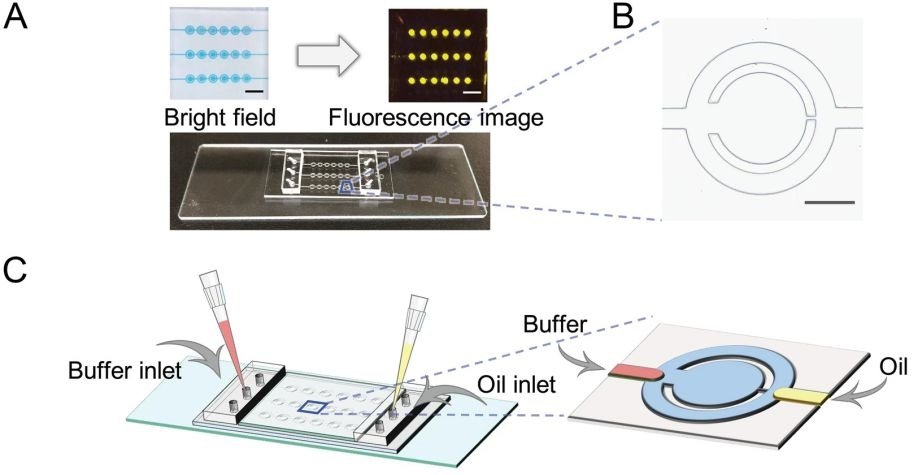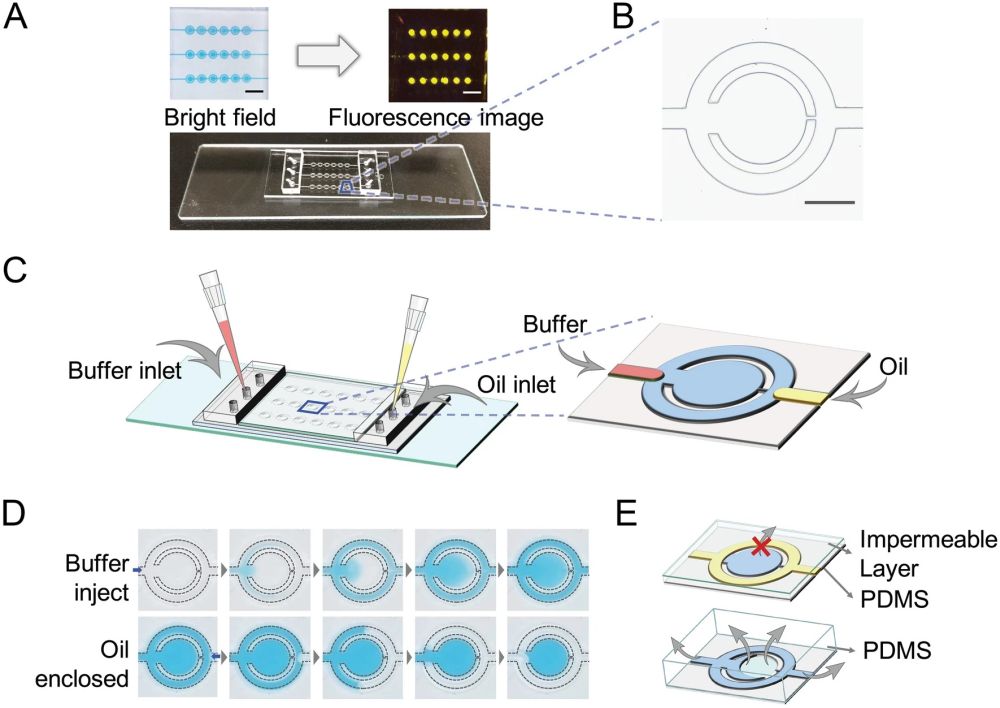
30 Oct Passively driven microfluidic platform for perform loop-mediated isothermal amplification (LAMP) detection
Lab on a chips are handheld microfluidic devices that are destined to integrate everyday lab routines such as DNA/RNA extraction, cell washing, cell sorting, etc. A crucial step that is required for diagnostics and point-of-care applications is nucleic acid amplification. In this week’s research highlight, we will introduce a recent article published in the Scientific Reports Journal where a research team reports a simple and user-friendly microfluidic chip that can perform loop-mediated isothermal amplification (LAMP) detection.
“The microfluidic-based nucleic acid detection platform offers a great opportunity for on-site diagnosis efficiency, and the system is aimed at user-friendly access. Herein, we demonstrate a microfluidic system with simple operation that provides reliable nucleic acid results from 18 uniform droplets via LAMP detection. By using only micropipette regulation, users are able to control the nanoliter scale of the droplets in this valve-free and pump-free microfluidic (MF) chip. “, the authors explained.
The working mechanism of the microfluidic device
The proposed microfluidic device for nucleic acid detection includes three microchannels each consisting of 6 circular chambers with a total of 18 reaction chambers to allow multiplexing. The microfluidic chip was microfabricated using an etching technique followed by soflithogrpahy using PDMS. The reaction chambers have a diameter of 450 µm and a height of 100 µm resulting in a reaction volume of 60 nL. The microchannels are connected to two ports on each side for reagent delivery. The microfluidic chamber consists of two concentric circles. The inner circle serves as the bioreactor where the reaction takes place while the outer circle will be filled with oil to prevent evaporation.

Reproduced from Lin, PH., Li, BR., Sci Rep 11, 21019 (2021). under Creative Commons Attribution 4.0 International License.
First, the LAMP reagents are pipetted to the buffer inlet where they passively get delivered to the chambers via capillary force. Next, oil is pipetted to the oil inlet and travels through the microchannels. The microfluidic device is designed such that the oil does penetrate through the reaction chamber and only fills the peripheral channel. Therefore, the reaction chamber gets enclosed with oil.
“The development of the rapid and user-friendly MF device that cooperated with isothermal LAMP method holds a promising and robust nucleic acid detections for bacteria, virus and gene in biological samples. It definitely lower the complexity and power consumption of the system and makes the LAMP-MF system appropriate in the revolution of point-of care diagnostic. As an outlook, the MF-LAMP has the great potential in systematically integrated with the extraction process of the nucleic acid, that include pre- encapsulated extraction amplification reagent into the device “, the authors explained.
Figures are reproduced from Lin, PH., Li, BR. Passively driven microfluidic device with simple operation in the development of nanolitre droplet assay in nucleic acid detection. Sci Rep 11, 21019 (2021) under Creative Commons Attribution 4.0 International License
Read the original article: Passively driven microfluidic device with simple operation in the development of nanolitre droplet assay in nucleic acid detection


